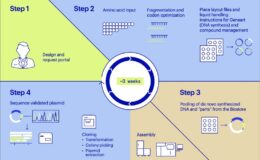
The question of what happens to people who died immigrating illegally into the country turned into Operation Identification, a program at the Forensic Anthropology Center at Texas State University in San Marcos.
“Our mission is to locate and exhume and identify and repatriate unidentified human remains on or near the Texas border,” Dr. Kate Spradley said.

Since its founding in 2013, Spradley said the operation has been able to identify 33 people out of 297 sets of skeletal remains or bodies in advanced states of decomposition where autopsies are no longer possible.
Most of those bodies were exhumed from the Sacred Heart Cemetery in Brooks County after it became clear that people were illegally crossing the border in large numbers and some of them were dying in places like Brooks that didn’t have the resources to handle the crisis.
“Remains were often found and buried without the proper investigation, which means the families will never know what happened to their loved ones,” Spradley said.
Identifying unknown people is difficult work and is impossible without collaboration.
When a body is found, law requires a DNA sample to be submitted to databases like the National Missing and Unidentified Persons System, of NamUs, and the Combined DNA Index System, or CODIS.
“If you don’t have the families of the missing providing their DNA there is nothing to compare it to,” Spradley said. “That’s why it’s important to work with the federal government and non-governmental organizations.”
So Spradley and her team work with other teams working in Mexico on missing person cases who are also taking DNA samples.
She also works with the Calibrí Center, an organization that partners with families and forensic scientists to find missing people and identify those who have died on the border.
This organization collects detailed missing persons reports and DNA samples from families searching for missing loved ones.
The goal is to identify each and every set of remains and reunite those people with their loved ones.
“That is our goal. We would love to repatriate everybody,” she said. “It is really difficult and most people say, ‘Oh, you only identified 33.’ Those 33, it took a lot of work to get there.”
And the work is far from over.
“It seems like it could go on for a long time,” Spradley said.















